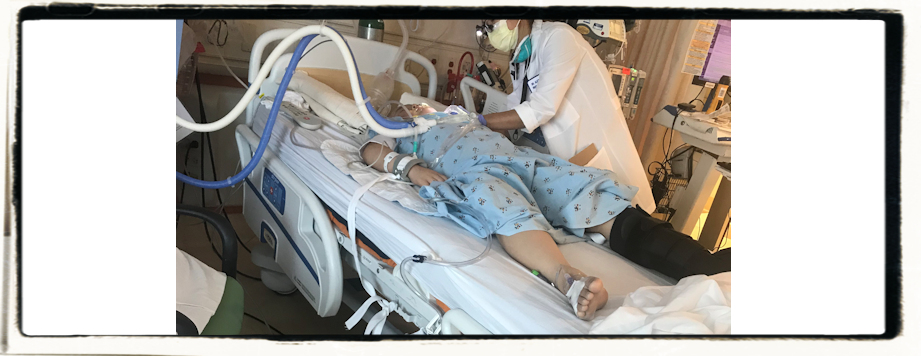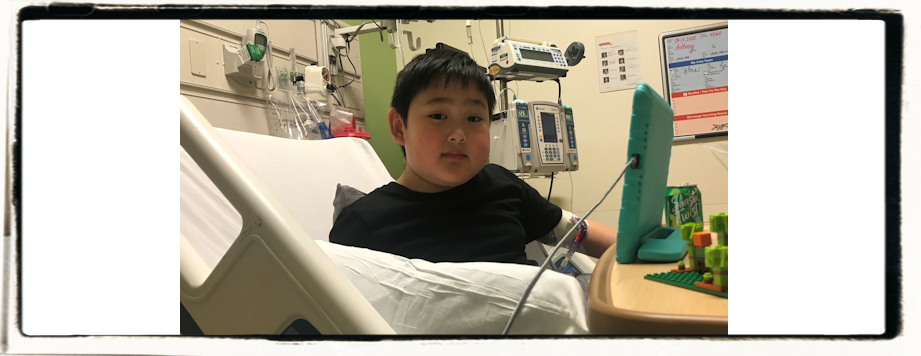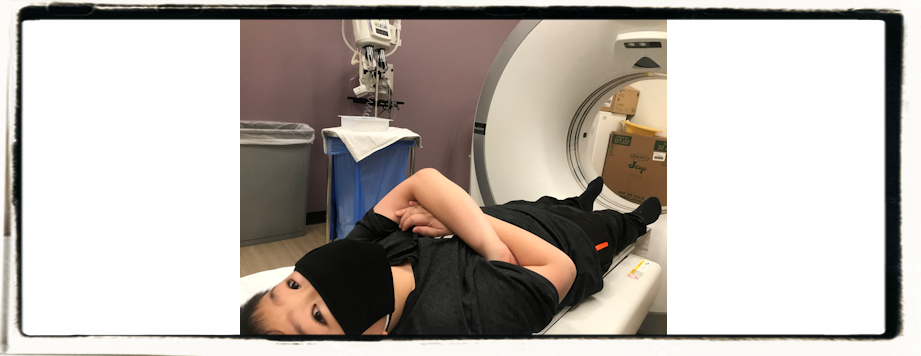High Grade
Bone Cancer
Osteosarcoma
Anthony was first diagnosed with having an Undifferentiated Sarcoma. After the removal of the tumor by surgery the specimen was sent to an expert at Children Hospital in LA for a second opinion. This doctor said it had some characteristics as a bone cancer, however he wanted another opinion and he then sent the specimen to another expert who classified it as a High Grade Osteosarcoma.
What is Osteosarcoma?
Osteosarcoma is a type of cancer that produces immature bone. It is the most common type of cancer that arises in bones, and it is usually found at the end of long bones, often around the knee. Most people diagnosed with Osteosarcoma are under the age of 25, and it is thought to occur more often in males than females.
Osteosarcomas range from low grade tumors that only require surgery to high grade tumors that require an aggressive treatment regimen. Patients with osteosarcoma are best treated at a cancer center where an expert sarcoma team and resources are available to provide specialized and responsive care.
What causes Osteosarcoma?
Scientists have not discovered the cause of most cases of Osteosarcoma. Osteosarcoma can develop as a result of radiation to an area of the body. It can also be associated with specific genetic changes and diseases.
What are the symptoms of Osteosarcoma?
Most people with Osteosarcoma do not feel sick. Patients may have a history of pain in the affected area and may have developed a limp. Often the pain is thought to be related to muscle soreness or "growing pains," but it does not go away with rest. Many patients only see a doctor when there is some sort of injury to the area or when the tumor weakens a bone so much that it breaks (this is called a pathological fracture).
How is Osteosarcoma diagnosed?
An x-ray is often the first diagnostic test that Osteosarcoma patients receive, and an experienced radiologist may recognize immediately that bone cancer is the likely diagnosis. There are several additional tests that are a critical part of Osteosarcoma diagnosis and staging:
- An MRI of the entire bone where the primary tumor is located. This test can rule out "skip metastases" (spread of the tumor to other areas of the bone).
- A chest x-ray and CT scan of the chest to detect lung metastases
- A bone scan of the body to rule out distant spread of the disease
- A biopsy of the tumor, which provides a definite diagnosis based on the characteristics of tumor tissue seen under a microscope. The biopsy will also show whether the tumor is high grade (highly malignant, which is the case for most Osteosarcomas) or low grade.
There are two main types of biopsy: a needle aspiration and a surgical biopsy. The location, incision and technical aspects of the biopsy can affect a patient’s treatment options and outcome. Therefore, it is essential that the biopsy is planned by a surgeon experienced with sarcomas.
The results of the biopsy and imaging studies provide physicians with an idea of the "personality," or stage, of the disease. Most patients are diagnosed with high grade disease that does not appear to have spread throughout the body. However, it is believed that about 80% of patients with high grade Osteosarcoma already have metastatic disease that is not yet visible on imaging tests.
How is Osteosarcoma treated?
Osteosarcoma is often treated with a combination of therapies that can include surgery, chemotherapy and radiation therapy. Most patients with high grade tumors receive about three months of chemotherapy, known as neo-adjuvant therapy, before surgery. A surgeon will then remove the tumor, along with a wide margin of healthy tissue around the tumor, with the goal of leaving the area free of all disease.
Most tumors at the bones and joints can be removed safely while sparing the involved limb. A surgeon might use a metal implant, an allograft (bone taken from a cadaver), a combination of an implant and allograft, or a bone taken from the patient in order to replace tissues that are removed during surgery. Occasionally, because of a tumor’s size or location, an amputation or rotationplasty is the best way to completely remove the cancer and restore the patient to a functional life.
When considering surgical options, it is important that the patient and surgeon talk about the expected functional results of each option and the possible complications and risks involved. It may be in the patient’s best interest to ask a surgeon how many procedures he or she has done that involve a specific joint and to seek a second opinion from a surgeon who has more experience performing a specific surgery. Overall, patients who have limb salvage surgery and those who have amputation report similar rates of satisfaction and function after their recovery, but these rates vary greatly from one person to the next.
After surgery, a pathologist will report the tumor’s necrosis rate (the percentage of tumor cells that are dead), which is an indicator of how well the tumor is responding to the chemotherapy. Based on the necrosis rate, drugs are chosen for additional chemotherapy treatment, which normally lasts about six months after surgery.
Though radiation therapy is not widely used in Osteosarcoma treatment, it can be effective and is occasionally recommended, especially when a tumor is difficult to remove surgically or when residual tumor cells remain after surgery.
Tests are done to monitor each patient’s health during treatment, with a focus on the heart, kidneys and liver. Some patients are also given scans that can indicate a tumor’s response to therapy. Because each individual responds differently, there may be significant changes to a patient’s treatment plan along the way.
What is the prognosis for Osteosarcoma patients?
Prognosis statistics are based on the study of groups of Osteosarcoma patients. These statistics cannot predict the future of an individual patient, but they can be useful in considering the most appropriate treatment and follow-up for a patient.
When treated appropriately, patients with high grade Osteosarcoma in one location have a survival rate of about 70%. The survival rate is higher for patients with low grade tumors, and it is lower for those whose disease has spread throughout the body and for those whose tumors have a poor response to chemotherapy.
How are patients followed after treatment?
The National Comprehensive Cancer Network recommends a schedule of follow-up exams and tests for Osteosarcoma patients. It includes appointments every three months for the first two years, every four months for the third year, every six months for the fourth and fifth year, and annually thereafter. Most appointments include a physical exam, imagining of the original tumor’s location and imaging of the lungs. In patients who have been treated with chemotherapy, tests are also done periodically to monitor the heart, liver and kidneys; to test for hearing loss and to check hormone levels, bone density and cholesterol. If recurrence is detected at follow-up, further chemotherapy and/or surgery is usually recommended.








